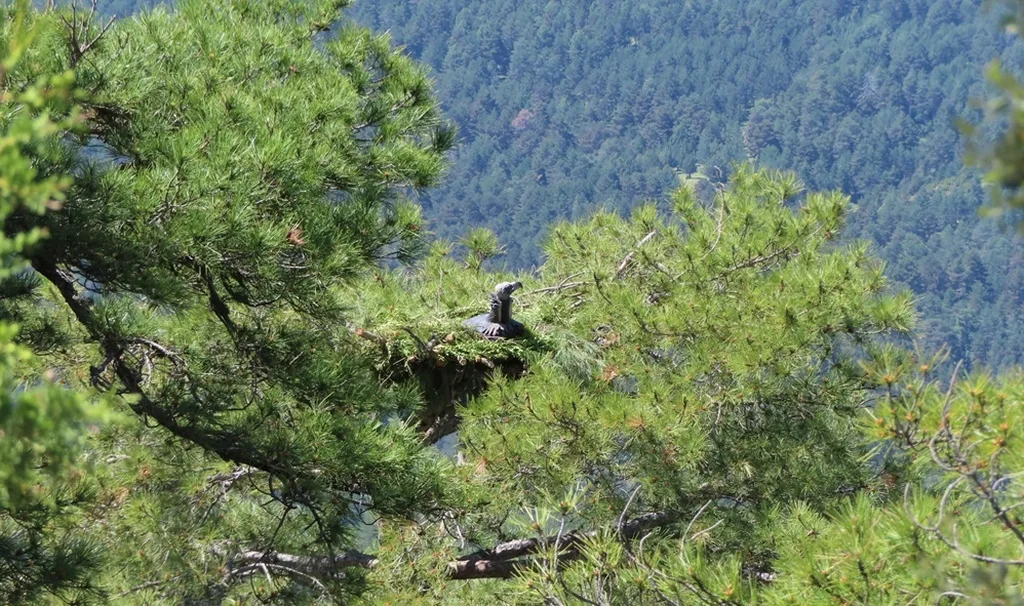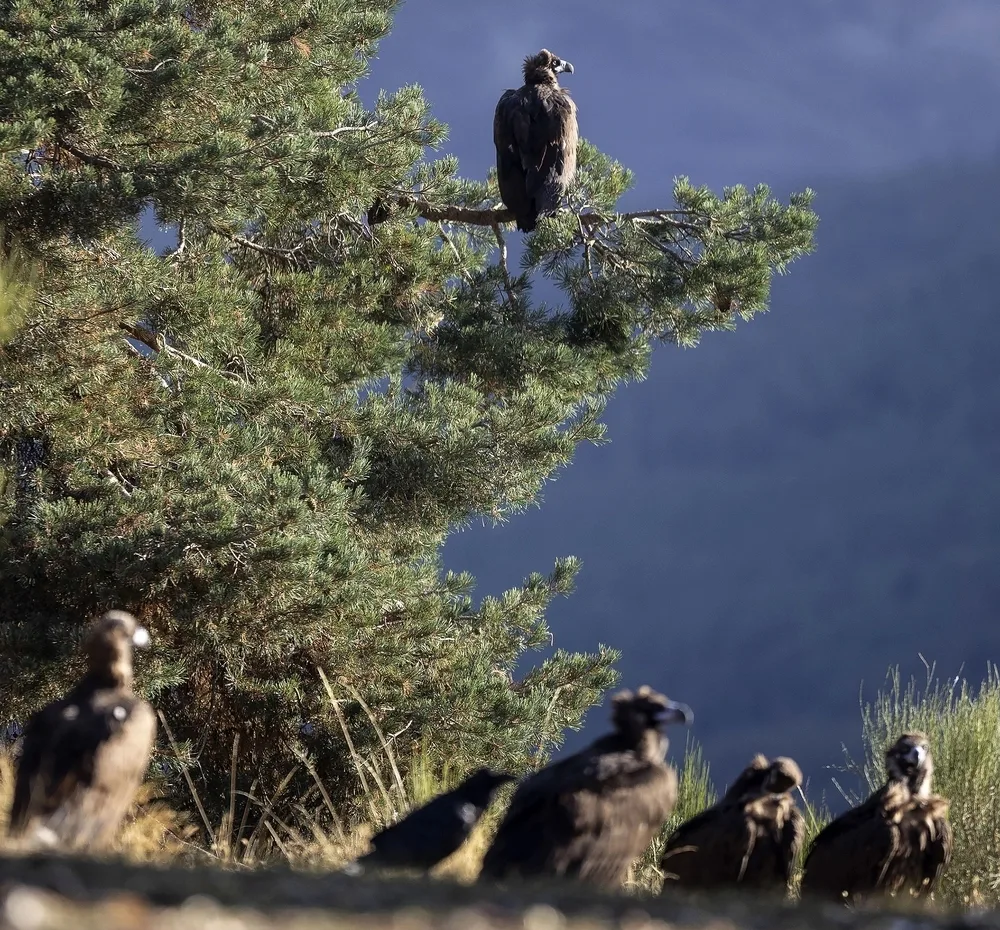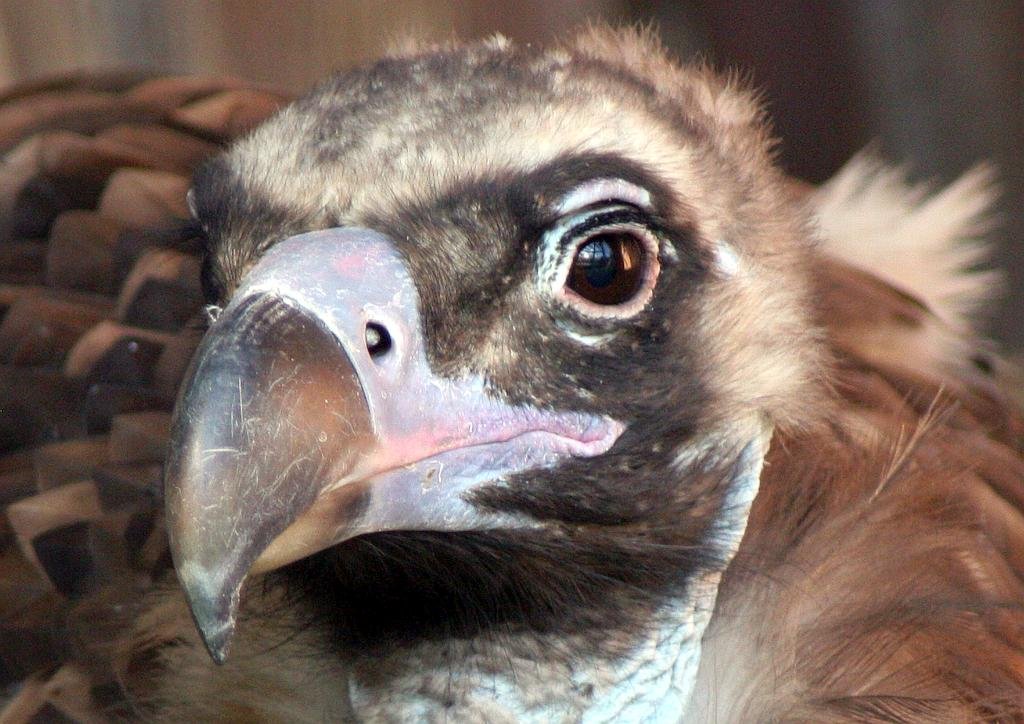In the heart of the Iberian Highlands, the resurgence of black vultures in Spain unfolds through dedicated conservation efforts. In Alto Tajo Nature Park and the Sierra de la Demanda, new nests signify a strategic push to reintroduce these majestic raptors. With support from the Regional Government of Castilla-La Mancha, Rewilding Spain, Terra Naturalis, and GREFA, the black vulture’s return becomes a compelling narrative of successful collaboration.
Facilitating Settlement in the Iberian Highlands
To foster the establishment of the black vulture (Aegypius monachus) in the Alto Tajo Nature Park, five new artificial nests have been strategically built across different areas. These nests, totaling 21 in the Alto and Serranía de Cuenca regions, aim to support the definitive return of the species to the Iberian Highlands. Unlike their griffon counterparts, black vultures prefer nesting in treetops. Notably, two of these nests are equipped with life-size decoys.

The construction of these nests is integral to the black vulture reintroduction program initiated by the Regional Government of Castilla-La Mancha in 2020. Practical on-site work is carried out by Rewilding Spain and the Terra Naturalis association.
Within this program, 17 black vulture specimens have already been released into the landscape. The latest group, comprising seven individuals, was released in June after spending six months in an adaptation cage equipped with GPS transmitters for monitoring their movements. Monitoring reveals that a significant number of released vultures remain active in the Iberian Highlands.
A positive development is noted as one of the program’s initial specimens, now reaching reproductive age, regularly roosts near one of the nests. This suggests a likelihood of mating and settlement in the area, marking a significant milestone for the program and potentially attracting other birds.
Throughout 2023, improvements were made to the conditioning and video surveillance system of the adaptation cage, preparing it to receive new specimens for the reintroduction program. Black vultures released earlier originated from various Wildlife Recovery Centers in Castilla-La Mancha, where they arrived due to diverse physical problems.
Other species also doing well in the area
In collaboration with the Junta de Castilla-La Mancha Region, Rewilding Spain and Terra Naturalis are also working on the return of the bearded vulture (Gypaetus barbatus) to areas where it has been extinct since the mid-20th century. Six supplementary feeding points are maintained in Guadalajara and Cuenca provinces, attracting dispersing specimens for stable feeding opportunities, monitored through photo-trapping.

The Iberian Highlands already host thriving populations of griffon vultures (Gyps fulvus) and Egyptian vultures (Neophron percnopterus). The return of the cinereous vulture and bearded vulture will further strengthen the crucial role necrophagous birds play in healthy ecosystem food chains.

Conservation Beyond Borders with Terra Naturalis
Terra Naturalis, a non-profit organization, focuses on nature conservation, sustainable development, and the enhancement of natural, cultural, and ethnographic heritage. Besides its involvement with the black vulture and bearded vulture, their action lines extend to the protection of various species of steppe birds. https://www.terranaturalis.org/
The Return of the Black Vulture in the Sierra de Demanda
Huerta de Arriba: A Crucial Link
The small village of Huerta de Arriba has become a vital link between the Iberian and European populations of the continent’s largest raptor.
In addition to the birds of prey released by GREFA (Grupo de Rehabilitación de la Fauna Autóctona y su Hábitat) in the last six years, the Sierra de la Demanda is now home to black vultures from the Gredos and Guadarrama mountain ranges, the Pyrenees, and France.
The black vulture (Aegypius monachus), Europe’s largest bird of prey, now thrives, breeds, and soars freely in the province of Burgos, more than 60 years after its disappearance. Their immense nests, adorned with fledglings preparing for their first flights or embarking on their initial ventures, grace the tall pine trees in the secluded valleys of the Sierra de la Demanda in Burgos and La Rioja, and even the junipers of the neighboring region of Arlanza.

The “Monachus” project, focusing on the reintroduction of this large necrophagous bird in the northern part of the Iberian System, situated in the Huerta de Arriba mountains, has reached fruition. After six years of releasing birds into this picturesque natural environment, a colony of 23 to 24 pairs now coexists, capable of reproducing, mingling with other colonies, and potentially forming new ones in different territories.
The success of the Monachus program, overseen by GREFA, is not only local but also national and European in scope. Huerta de Arriba has unwittingly become the centerpiece of one of the most ambitious and exemplary natural recovery projects.
This village, with less than a hundred inhabitants, now serves as the bridge between the newly established black vulture populations in the Central Massif of France, the Provençal and Maritime Alps, Bulgaria, the Catalan Pyrenees, and, to the south, the Guadarrama mountains and Gredos and Monfragüe, where a substantial portion of the 3,000 pairs inhabiting the Iberian Peninsula are located.
In the future, La Demanda will connect with other reintroduction points planned in Castellón/Tarragona the Cabrejas mountain range (Soria/Zaragoza) and of course the Iberian Highlands.
Three specimens released in Burgos, tagged and equipped with geolocation systems (GPS), have undertaken flights to Norway, the Alps, and to the border of Mauritania and North Africa. (“Cid”, released in 2019, has since returned from this African journey.)
GREFA is a non-governmental, non-profit organization founded in 1981 as an association for the study and conservation of nature. Since its creation, GREFA has maintained constant growth both in the development of its activities and projects and in means and resources. https://www.grefa.org/index.php
Some alternative titles for this article
- Wings of Conservation: Black Vultures Soar in the Iberian Highlands
- Flight to Freedom: Black Vulture Reintroduction Success Stories
- Raptors Reclaimed: Black Vultures’ Return to the Iberian Sky
- Conserving Majesty: The Black Vulture Chronicles in Alto Tajo
- Guardians of the Peaks: Black Vultures’ Nesting Triumph
- Black Vultures in Spain: Terra Naturalis and GREFA’s Conservation Odyssey
- Aerial Pioneers: Black Vulture Colonies in Sierra de la Demanda
- From Extinction to Flight: The Monachus Project’s Triumph
- Beak by Beak: Collaborative Efforts for Vulture Conservation
- Necrophagous Renaissance: Black Vultures’ Vital Role in Ecosystems
Ronda Today
Everything you need to know before you visit Ronda “The city of dreams” in Andalucia. https://www.rondatoday.com/
Visit Cádiz
Planning on visiting Cádiz? Tourist information. Monuments. Hotels. Activities. City guides: https://visitingcadiz.com/
The Caminito del Rey
Find tickets for the Caminito del Rey: https://www.caminodelrey.es/
Wildside Holidays – Spain
Take a trip on the Wildside! Discover the wildlife and nature of Spain, its Natural and National Parks and find the top wildlife, activity and walking holiday companies.
Iberia Nature Forum
Discover the Iberia Nature Forum – Environment, geography, nature, landscape, climate, culture, history, rural tourism and travel.
I’ve been living in this lovely area of Western Andalucia for the last 20 years or so and dedicate most of my time to the running of English language tourist information websites for the towns of Cádiz, Ronda, Grazalema, the famous or infamous Caminito del Rey, and also Wildside Holidays, which promotes sustainable and eco-friendly businesses running wildlife and walking holidays in Spain. My articles contain affiliate links that will help you reserve a hotel, bus, train or activity in the area. You don’t pay more, but by using them you do support this website. Thankyou!
